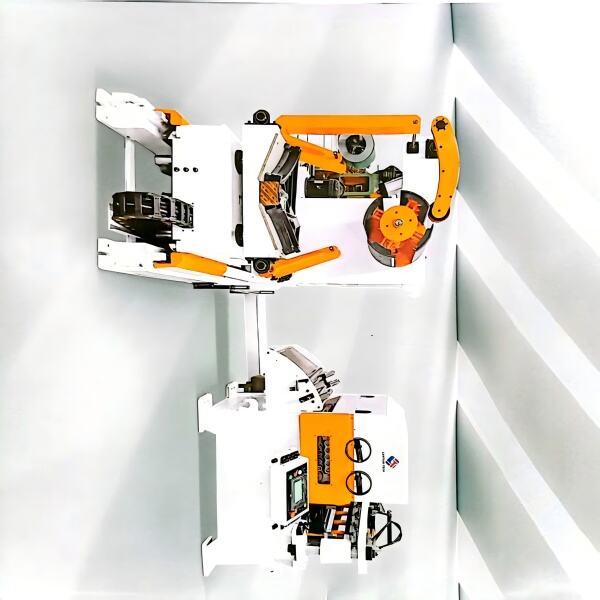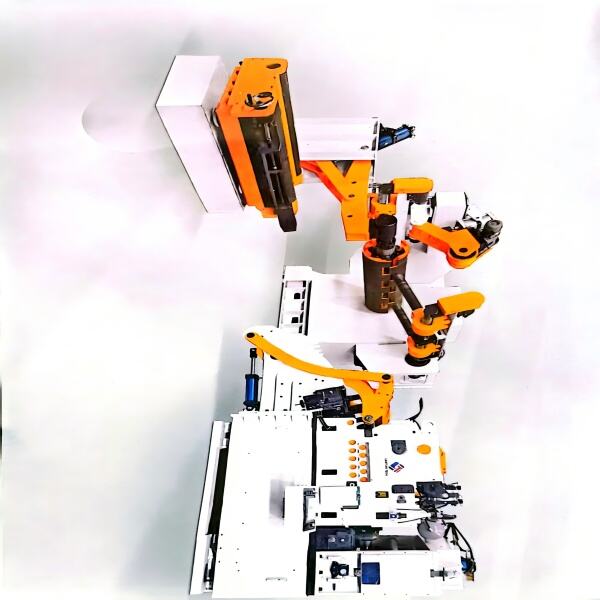Understanding Industrial Feeding Machine Solutions
The efficiency of modern manufacturing facilities heavily relies on automated feeding systems, with the three-in-one feeding machine emerging as a cornerstone of streamlined production. This versatile equipment combines loading, measuring, and dispensing capabilities into a single unified system, revolutionizing how materials are handled in industrial settings. As factories evolve to meet increasing production demands, selecting the appropriate feeding solution becomes crucial for maintaining competitive advantage and operational excellence.
Essential Components and Functionality
Core Mechanical Systems
At the heart of every three-in-one feeding machine lies a sophisticated mechanical architecture designed for precision and reliability. The loading mechanism incorporates advanced sensors and controls to manage material input effectively, while the measuring system ensures exact portioning through calibrated weight cells or volumetric mechanisms. The dispensing component utilizes precision actuators and specialized nozzles to deliver materials with minimal waste and maximum accuracy.
Control Interface and Automation Features
Modern three-in-one feeding machines feature intuitive control interfaces that simplify operation and monitoring. These systems typically include touchscreen displays, programmable logic controllers (PLCs), and network connectivity options for seamless integration with existing factory automation systems. Advanced models offer remote monitoring capabilities, allowing operators to adjust parameters and troubleshoot issues from centralized control stations.
Material Handling Capabilities
The versatility of three-in-one feeding machines extends to their ability to handle diverse materials, from fine powders to granular substances and even liquid components. Specialized hoppers, agitators, and feed screws ensure consistent material flow, while anti-bridging features prevent clumping and ensure smooth operation regardless of material characteristics.
Key Selection Criteria for Manufacturing Environments
Production Volume Requirements
When evaluating a three-in-one feeding machine, carefully assess your facility's current and projected production volumes. High-capacity models can process several hundred kilograms per hour, while smaller units might be more suitable for specialized applications or batch processing. Consider peak production periods and ensure the selected machine can handle increased demand without becoming a bottleneck.
Material Compatibility Analysis
Different materials present unique handling challenges, making material compatibility a crucial consideration. Evaluate factors such as particle size, density, flow characteristics, and potential reactivity with machine components. Some three-in-one feeding machines offer interchangeable parts or modular designs to accommodate various material types, providing valuable flexibility for diverse production needs.
Space and Installation Requirements
Factory layout and available space significantly influence equipment selection. Modern three-in-one feeding machines come in various configurations, from compact vertical designs to horizontal systems with extended conveyor sections. Consider maintenance access requirements, connection points for utilities, and integration with existing production lines when planning installation.

Advanced Features and Technology Integration
Smart Manufacturing Capabilities
Industry 4.0 compatibility has become increasingly important in modern manufacturing environments. Leading three-in-one feeding machines incorporate smart features such as real-time data analytics, predictive maintenance algorithms, and IoT connectivity. These capabilities enable better process optimization, reduced downtime, and improved overall equipment effectiveness (OEE).
Customization Options
Manufacturing requirements vary significantly across industries, making customization options valuable assets. Look for machines that offer modular components, adjustable feed rates, and programmable operation sequences. Some manufacturers provide custom hopper designs, specialized feeding mechanisms, or modified control systems to meet specific production requirements.
Safety and Compliance Features
Modern industrial equipment must meet stringent safety standards and regulatory requirements. Advanced three-in-one feeding machines incorporate emergency stop systems, safety interlocks, and dust containment features. Ensure the selected equipment complies with relevant industry standards and local regulations while providing necessary operator protection.
Maintenance and Support Considerations
Preventive Maintenance Requirements
Regular maintenance ensures optimal performance and longevity of feeding equipment. Evaluate the maintenance schedule requirements, accessibility of key components, and availability of spare parts. Some manufacturers offer predictive maintenance systems that monitor equipment health and alert operators to potential issues before they cause downtime.
Technical Support and Training
Comprehensive technical support and operator training are essential for maximizing equipment effectiveness. Consider the manufacturer's support infrastructure, including local service availability, remote troubleshooting capabilities, and training programs for maintenance staff. Documentation quality and accessibility of technical resources should also factor into the selection process.
Investment and Return Analysis
Total Cost of Ownership
Beyond the initial purchase price, consider the total cost of ownership when selecting a three-in-one feeding machine. Factor in installation costs, energy consumption, maintenance requirements, and potential upgrade paths. Some manufacturers offer financing options or leasing programs that can help manage capital expenditure while ensuring access to current technology.
Productivity Impact Assessment
Quantify the expected return on investment by analyzing potential productivity improvements. Consider factors such as reduced labor costs, improved accuracy, decreased material waste, and increased production capacity. Advanced feeding systems often deliver significant efficiency gains that can justify higher initial investments.
Frequently Asked Questions
What maintenance schedule is typically recommended for three-in-one feeding machines?
Most manufacturers recommend daily visual inspections, weekly cleaning of critical components, and monthly comprehensive maintenance checks. Critical wear parts should be inspected quarterly, while major overhauls are typically scheduled annually based on usage patterns and operating conditions.
How can I ensure optimal accuracy in material dispensing?
Optimal accuracy requires regular calibration of weight sensors, proper material flow settings, and consistent maintenance of feeding mechanisms. Modern machines often include self-calibrating features and automatic adjustment systems to maintain precision throughout production runs.
What safety features should I look for in a three-in-one feeding machine?
Essential safety features include emergency stop buttons, safety guards around moving parts, dust containment systems, and automated shut-off mechanisms. Advanced models also incorporate safety interlocks, operator presence sensors, and comprehensive alarm systems for various fault conditions.

